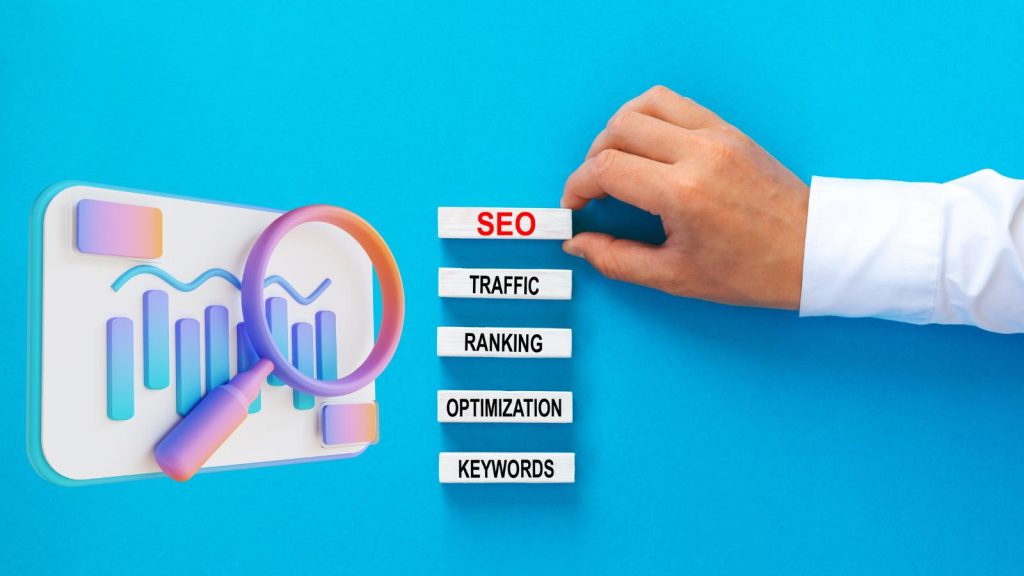In today’s digital landscape, having a well-optimized website is crucial for driving targeted traffic. One of the key elements of website optimization is on-page SEO, which involves optimizing various aspects of your web pages to improve their visibility and ranking in search engine results.
In this comprehensive guide, we will delve into the world of on-page SEO, providing you with valuable insights and actionable tips to help you master this aspect of website optimization.
And when you need a trusted partner for SEO, consider the expertise of Impressive. Impressive: Your trusted Partner for SEO in Sydney acknowledges the critical importance of a well-optimized website for achieving targeted website traffic.
Table of Contents
What is OnPage SEO
On-page SEO refers to the optimization techniques that are implemented directly on your web pages to improve their visibility in search engine results.
It involves various factors, including target keyword research, content optimization, internal linking, URL structure, meta tags, heading tags, and more.
By optimizing these on-page elements, you can improve your website’s chances of ranking higher in search engine results. Therefore, attracting more organic traffic, and ultimately boosting your online visibility and conversions.

Keyword Research and Analysis For Targeted Traffic
Effective keyword research is the foundation of any successful on-page SEO strategy. Start by identifying keywords and phrases relevant to your blog post or website and target audience.
Use keyword SEO tools like Google Keyword Planner, SEMrush, or Ahrefs to discover high-volume keywords with low competition.
Incorporate these keywords strategically into your website’s content, headings, meta tags, page title, and URLs to increase your chances of ranking well in search engine results. Here are some strategies you can use to improve your ranking:
Creating SEO-Friendly URLs
An SEO-friendly URL structure can significantly impact your website’s visibility in search engine results. Aim for short, descriptive, and keyword-rich URLs that accurately reflect the content of the page.
Avoid using unnecessary numbers, symbols, or special characters in your URLs, as they can make it difficult for search engines to understand and rank your pages.
Crafting Engaging Title Tag
Title tags are one of the HTML elements that define the title of a web page. They play a crucial role in on page SEO, as search engines use them to understand the content and relevance of a page.
Craft compelling and keyword-rich title tags that accurately summarize the content of your web pages. Keep them concise, preferably under 60 characters, and ensure they attract clicks by appealing to the users’ search intent.
Writing Compelling Meta Description
The meta description provides a brief summary of a web page’s content. While they don’t directly impact search engine rankings, they can influence click-through rates and user engagement.
Write engaging meta descriptions and meta titles that entice users to click on your search listings. Include relevant keywords and a clear call to action to encourage users to visit your website.
Optimizing Heading Tags (H1, H2, H3, H4)
Heading tags (H1, H2, H3, H4) are HTML elements defining your content’s headings and subheadings. They provide structure to your web pages and contribute to on page SEO.
Use heading tags strategically to organize your content and signal its relevance to search engines.
Ensure your H1 tag accurately represents the page’s main topic, while H2, H3, and H4 tags are used to divide the content into sections and subsections.

Structuring Content with Proper Formatting
When it comes to on page SEO, content structure and formatting play a vital role. Organize your content marketing into easily digestible paragraphs and sections, using proper formatting techniques such as bullet points, numbered lists, and subheadings.
This not only enhances readability for users but also helps search engines understand the context and relevance of your content. Make sure the content stays up to date as well.
Optimizing Image and Alt Text
Images can significantly enhance the visual appeal of your website and engage users. However, they can also impact your website’s performance if not optimized correctly.
Compress images to reduce their file size and use descriptive filenames. Additionally, optimize the alt text attribute for each image.
It provides a concise and keyword-rich description that helps search engines understand the image’s content.
Implementing Internal Linking Strategies
Internal linking refers to the practice of linking your web pages together within your website. It helps search engines discover and navigate through your content more effectively, improves user experience, and distributes link authority across your website.
Strategically include internal links within your content, focusing on relevant anchor text and ensuring a logical flow between pages.
Enhancing User Experience with Responsive Design
In today’s mobile-centric world, having a responsive website design is paramount. Responsive design ensures that your website adapts and displays properly on various devices, including desktops, smartphones, and tablets.
A responsive website not only provides a better user experience but also signals to search engines that your website is optimized for mobile devices, potentially boosting your search rankings.
Improving Page Speed
Page speed is a critical factor that influences user experience and search engine rankings. Optimize your website’s performance by minimizing file sizes, leveraging browser caching, and reducing the number of HTTP requests.
Compress and optimize your CSS and JavaScript files, and consider using a content delivery network (CDN) to deliver your website’s content faster to users across different geographical locations.
Optimizing for Mobile Devices
With the increasing number of mobile users, optimizing your website in digital marketing for mobile devices is no longer optional. Ensure your website is mobile-friendly and provides a seamless browsing experience on smartphones and tablets.
However, use responsive design, optimize images and videos for mobile viewing, and prioritize fast page load speeds to cater to mobile users effectively.
Implementing Schema Markup
Schema markup is a structured data vocabulary that provides search engines with additional information about your website content.
By implementing schema markup, you can enhance the visibility of your search listings with rich snippets, which can display additional information such as ratings, reviews, and product details.
This markup can improve click-through rates and attract more qualified traffic to your website.
Measuring OnPage SEO Performance

Regularly monitor and measure the performance of your on-page SEO efforts to identify areas for improvement. Utilize tools like Google Analytics and Google Search Console to track key metrics such as organic traffic, bounce rates, keyword rankings, and click-through rates.
Furthermore, analyze the data and make data-driven optimizations to continuously enhance your website’s on-page SEO performance.
Conclusion of On Page SEO For Targeted Traffic
Knowing the basics of on page SEO is essential for optimizing your website’s visibility and attracting organic traffic.
By implementing the strategies and techniques discussed in this comprehensive guide, you can enhance your website’s on page SEO and improve its chances of ranking higher in search engine results.
Remember to continuously site audit, monitor and adapt your SEO efforts to keep up with evolving search engine algorithms and user expectations.
- How To Snooze Someone On Facebook In 2026 To Avoid Drama - January 3, 2026
- Instagram Insights Explained: Simple Analytics That Grow Your IG Account - January 3, 2026
- Getting Meta Verified: Does It Work? Inspire To Thrive Interviewed 19 Users for Answers - December 31, 2025




Hi Lisa!
On-point and truly informative.
One thing I would like to add is your keyword density.
All of us use plugins like Yoast and Rank Math for optimizing our content. They are great tools but their keyword density indicator can’t be more wrong.
We all know that Google hates keyword stuffing.
While one might believe that as long as they are following Yoast and Rank Math, they can’t be stuffing keywords; the reality is if you try to please these tools in the case of keyword density, you are KILLING your SEO. Their densities are abnormally high. I wonder why they don’t update it.
When I was starting out, I made the same mistake and had to edit all my posts.
Your keyword should be in:
1.Your URL
2. Your meta description
3. Your H1 Title tag
4. One or two subheadings
5. A few times, 3-4 (max) within your content spread evenly
That’s it! No more!
Hope it helps your audience, Lisa!
Thanks for the post.
Hi Ali, excellent point about the keyword density as it has gone done over the years. It believe the recommended amount is between 1-2% however, you can use versions of the keyword not just the exact one. I’ve been updating my content like that with my updated posts. I had too many in the headers for sure! Thanks for your valuable input on this topic Ali. Have a great day.
Oh yes! How can I forget the related keywords. They are as important as the target keyword.
Thank you for providing these valuable insights Lisa, I’m already following some of these, but I’ll definitely keep an eye on the others to learn and enhance my skills further. Your recommendations are on point! My On page score is about 80-85. but still no decent traffic. I guess, it’s not just SEO, content does play an important role. I need to work on my content.
By the way, do you have an Instagram handle? I’d love to follow you there too and stay connected! 😎
You are most welcome Salar. Welcome to Inspire To Thrive. Yes, you must also write for readers. I just read a great article that said SEO can take up to a year to work, so have patience too.) My Instagram is: https://www.instagram.com/inspiretothrive_lisa/ Thanks for coming by and have a great day.
What an excellent guide, Lisa. Most blogger skip keyword research or SEO all together for the fear of rolling up their sleeves and diving in to the work. No need to be intimidated by the details because once you learn the basics it comes down to publish thorough, long-form, highly targeted content based on the right long tail keywords that your readers query. Toss in your helpful details fleshed out above and with patience, posts will rank.
Ryan
Thank you Ryan. Oh yes, I was one of those bloggers years ago. It does get easier in time and with the right tools. Thanks for coming by and have a great day Ryan.